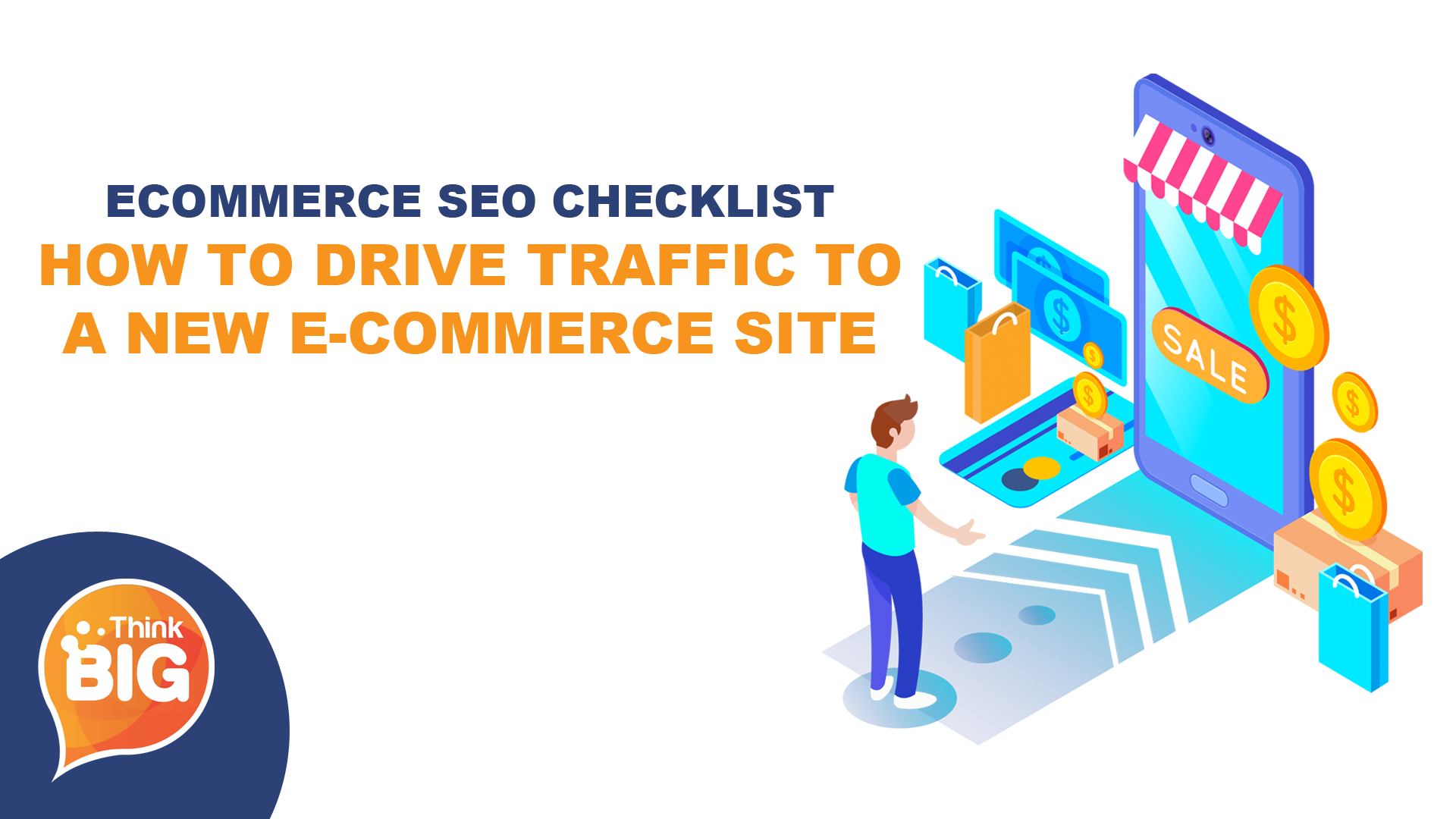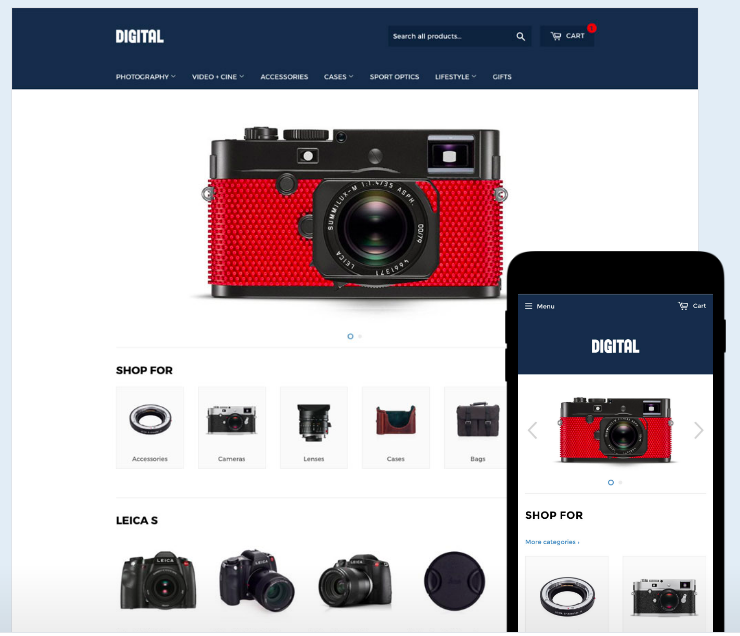
Unlike large e-commerce companies who can afford to hire SEO professionals, smaller ones that are just starting out have to do it themselves.
This article offers 6 SEO tips that will help e-commerce newbies attract organic traffic and rank higher on search engines.

E-commerce SEO Checklist #1 – Choose a Compelling Product/Keywords
If you’re wondering where to start from, check Google to see which one of your products is popular in searches. For this purpose, you can use Google Trends.

Based on this, you can start researching the first keywords you want to rank for. For instance, if your selected product is ‘women’s sports shoes’, you can use tools like Keywords Everywhere to get a large number of suggestions, along with their search volumes and competition.

Choosing keywords that have high volume search but are less competitive is crucial. This increases your chances to rank higher and generate new traffic. On the other hand, targeting the same keywords as big players like eBay is pointless, because it will take lots of time and effort to rank high (if you ever rank at all).
E-commerce SEO Checklist #2 – Distribute Keywords Strategically
From a technical point of view, the selected keyword must be included in your product description in order to tell Google your page is relevant to a specific search.
In addition, make sure the keyword appears at the following locations on the page:
- headline
- subheadings
- body content
- image file name
- image ALT tags
- image description
However, be careful not to overuse the keyword. Search engines scan pages to check if they make sense. If a certain keyword is used more than three times in about 300 words, you may get penalized for spamming or keyword stuffing.
E-commerce SEO Checklist #3 – Define Your Target Audience
Many sites decide to target all consumers which, from an SEO perspective, is a big mistake. Every product has its own audience.
For instance, Sweaty Betty is an e-commerce site that sells women’s sports equipment, whereas Think Geek sells merchandise that appeals to geeks. Accordingly, all the elements on their websites including copy, language, and visuals, are adjusted to resonate with their target audience.
Your job is to define what kind of people would be interested in your products. One way to do this is by creating a buyer persona. This will help you understand their behavior, habits, interests, needs, tastes, and pain points.
Knowing your target audience will enable you to create content (descriptions, pictures, pricing) that resonates with them, using the language they understand.
E-commerce SEO Checklist #4 – Write an SEO-friendly Description
What does ‘SEO-friendly’ mean when it comes to product pages? It means that the content you’re writing should be optimized, but not only in terms of including the selected keywords.
You should also consider the users’ expectations and needs. Writing descriptions for the search engines only can reduce their legibility and readability which, in turn, may reflect on the engagement.
On the other hand, if you write unique, original, and relevant copy, search engines will also reward you with better rankings.
Here are a few simple tips that will help you accomplish this:
Understand the product
In order to write a detailed description, you need to completely understand the product, including its purpose, benefits, and key selling points. Otherwise, your description will be too general.
To be able to do this, you can conduct a research online, gather technical details from the manufacturer, try a demo, etc.

Emphasize the product’s key features
When describing a product, besides explaining its functionalities, you should also point out its key features and benefits.
Since online shoppers usually only scan a page, the best way to grab their attention is to list these key features using bullet points.

Finally, add practical examples to cover different uses of the product.
Use simple language
The language you use largely depends on your target audience. The audience on e-commerce sites is comprised of common users who don’t expect to face unfamiliar words.
Users don’t have time to decipher the meaning of strange vocabulary and technical terms – they just want to know what the product is about. This dictates the use of simple, every-day language, as well as short and concise sentences.
Avoid being too promotional
Search engines focus on providing value, i.e. they favor informative content. So, avoid sounding salesy and using bombastic phrases like ‘excellent’, ‘top’, ‘best-selling’, or ‘the best’. Instead, focus on providing valuable information by discussing the product’s benefits, uses, and core features.

Be unique and original
Uniqueness is crucial in SEO. Several years ago, the search engine’s algorithms were not as sophisticated as today. Then, all you needed to do was copy a product description from your competitors and change it just enough to sound unique.
Today, using copied or spun content can get you penalized or even banned from search engines. That’s why you need to write original descriptions from scratch!
Bottom line is, instead of writing for the search engines, focus on creating an informative description first, then optimize it for SEO.
SEO for E-commerce Checklist #5 – Go Mobile
Having a mobile-friendly e-commerce site is a must if you want to be competitive in the online shopping market.
Today, people are searching for and buying products on the go, using their mobile devices. Here’s what the statistics say:
- Over 60% of users have made an online purchase using their smartphone in the last six months.
- As of 2016, more than 135 million buyers have made an online purchase using a mobile device.
- 80% of buyers used their smartphone inside a physical store to check product reviews or compare prices.
Ignoring these facts means losing a large number of potential customers. That’s why optimizing your site for mobile is a must.
How to optimize your site for mobile
If you don’t offer users a good mobile experience, they’ll simply leave. Here are some more statistics to confirm this:
- More than 40% of users will go to a competitor’s site when faced with a negative mobile shopping experience.
- Over 50% of consumers did not complete a transaction via mobile device because they felt uncomfortable leaving their credit card details.
- Over 65% of mobile users did not complete their purchase because of obstacles during checkout.
When optimizing your e-commerce site for mobile, think about how to offer users a convenient and seamless experience.
- Make sure your website loads fast enough. On average, if it takes longer than 3-4 seconds to load, users will go to a competitor’s site.
- Make sure the website is easy to use and navigate. If people need to move and scroll around the page just to find the main menu, they’ll get frustrated and leave. The pathway starting from the home page, via a product page, and finally to the checkout page should be fairly simple.
Experts claim that responsive design is the best option for making your site mobile-friendly. Mobile responsive sites are made for all types of devices, i.e., they automatically adjust to any screen size.
The biggest search engines also favor responsive design websites. This means that you don’t have to use any redirects or worry about how your site will be indexed and crawled. In other words, responsive design sites are favorable from an SEO perspective as well.
If you’re trying to optimize your website for mobile on your own, there are many mobile responsive e-commerce templates that can help you a great deal. Here are a just few examples:


Kitchen Supplies Store by XCart

However, mobile optimization can be a complicated task and you might need help from pro developers.
SEO for E-commerce Checklist #6 – Use Social Media
With almost 90% of consumers turning to social media networks for product recommendations and help when buying online, it is safe to say social media plays a very important role in the evolution of e-commerce.
Including social media in your e-commerce marketing strategy can attract more traffic, increase engagement, improve brand awareness, and of course, boost sales.
Here are a few effective social media tactics you can use:
- Optimize posts by using the keywords (see #1 above). This will increase the posts’ visibility and help you reach a bigger audience.
- Keep post short & concise. Shorter posts with intriguing headlines are more easily digested and more often shared.
- Use visual content to grab people’s attention more easily. Make product pictures shareable on platforms like Pinterest and Instagram and include selfies from satisfied customers with your products.
- Post useful and valuable content that your potential customers will want to share. The point is to put the users’ needs first but also find the perfect balance between being informative and entertaining.
- Be consistent. Posting regularly is essential if you want to drive traffic and improve engagement. For this purpose, you can use marketing automation tools to schedule posts in advance.
- Share positive reviews from satisfied customers. Social media users are very likely to trust an unbiased third party when it comes to making a purchase online.
- Add social sharing widgets on all product pages on your website to make sharing easier.
- Engage with customers on a daily basis by responding to their comments and answering questions. Also, thank everyone who shares your content. This is an excellent way to show that you are interested in satisfying your customers’ needs and continually improving your services.
- Turn to paid social media ads if your budget allows it. Highly targeted ads are a great way to increase traffic significantly.
Conclusion
E-commerce SEO might look a bit intimidating but our guide will help you master the basics in no time.
This article suggests a few fairly simple things that require little or no technical knowledge, like choosing and distributing keywords, writing great product descriptions, as well as using social media to promote your e-commerce website.
Did we miss anything? Let us know in the comments.

